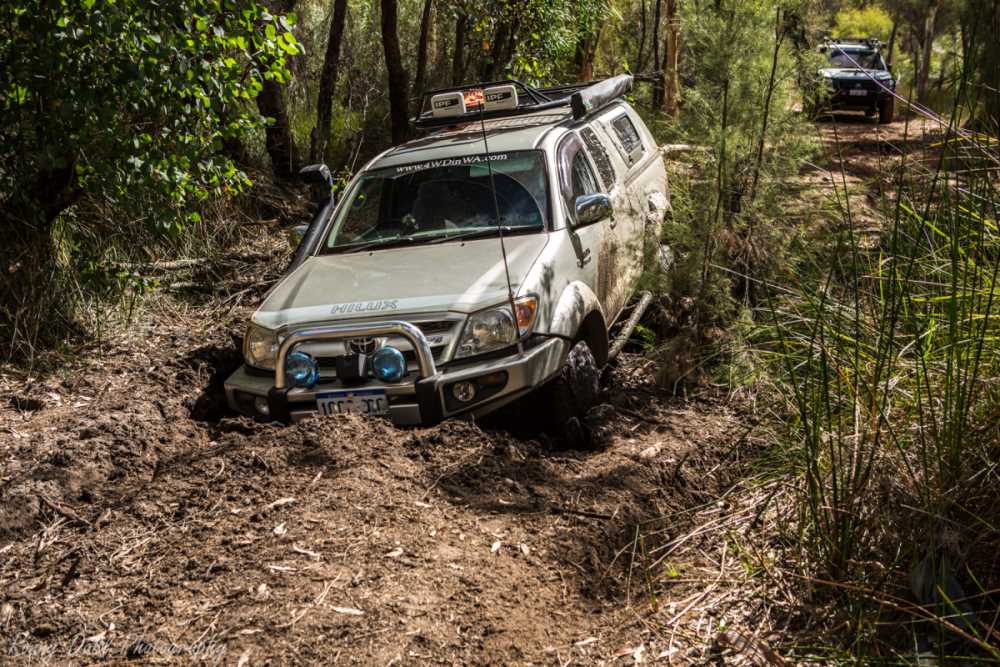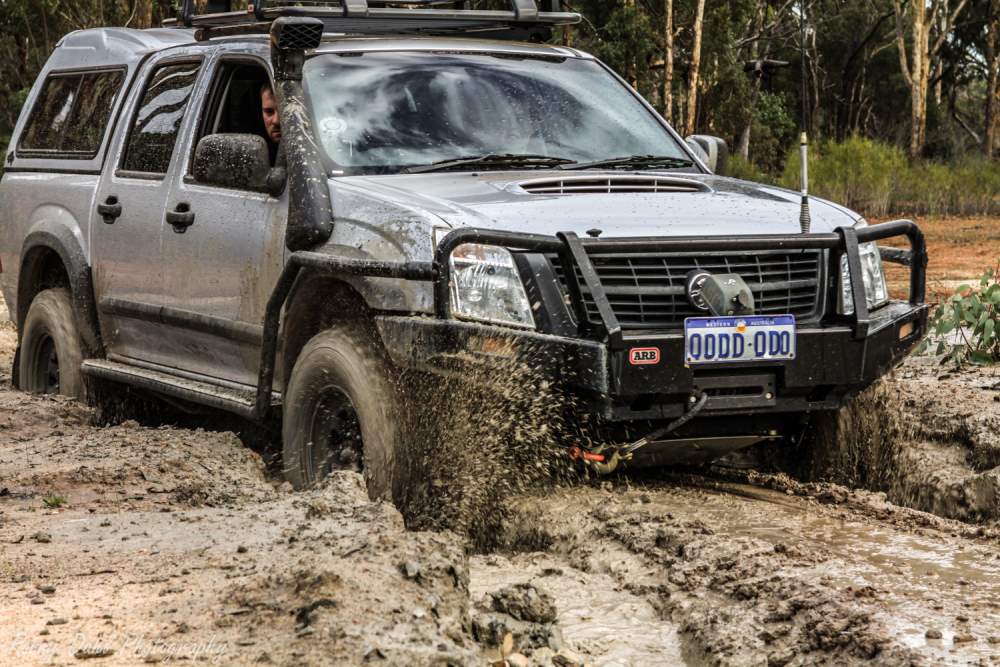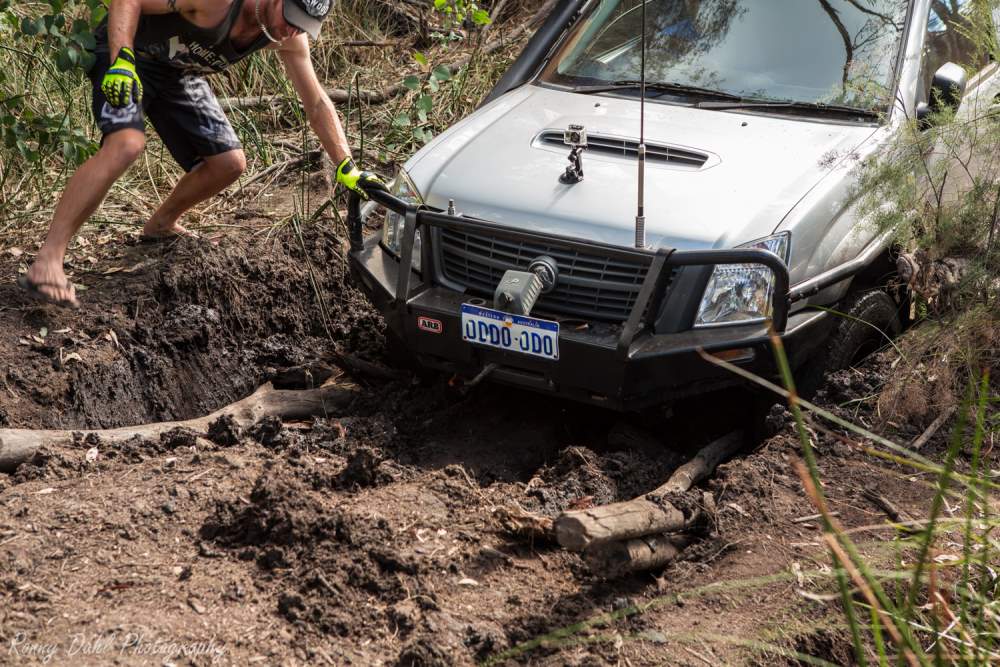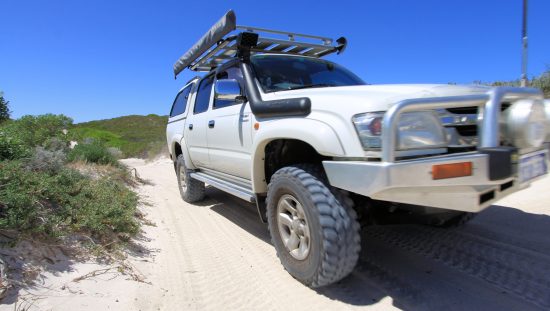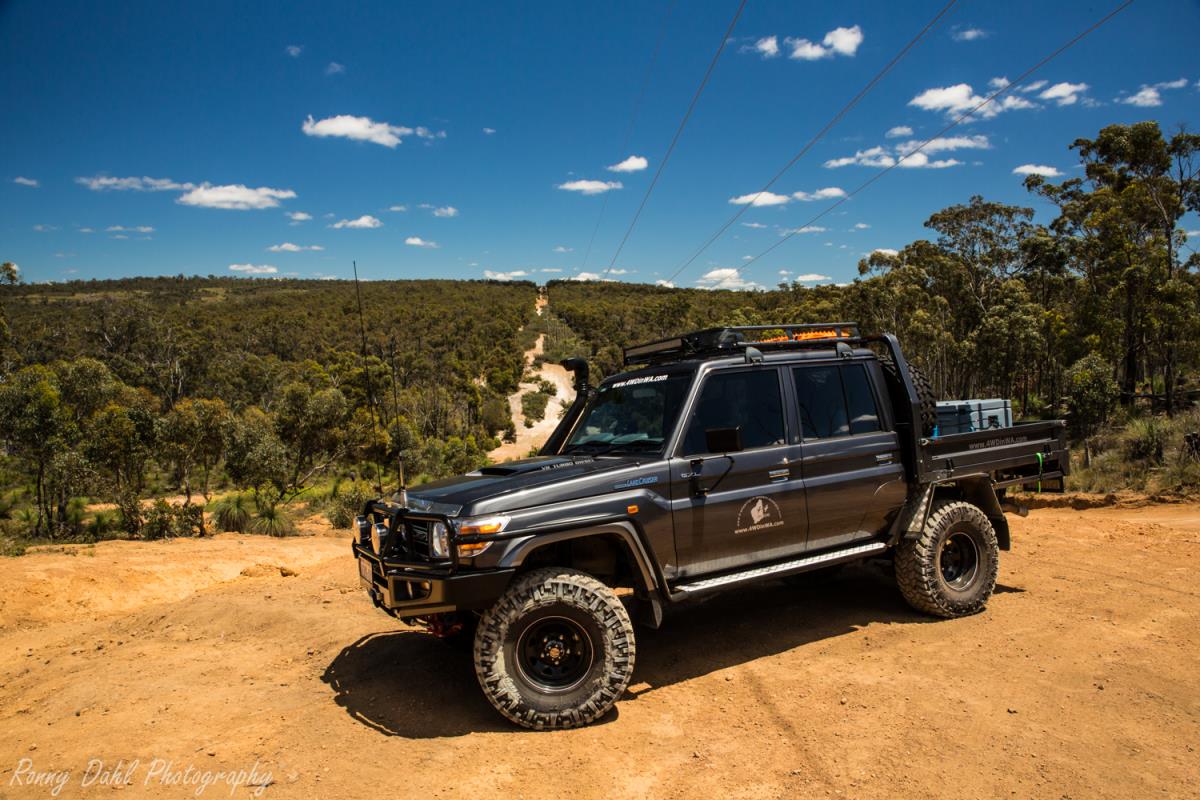
Stuck in mud.
There
is nothing like a dirty, muddy 4 Wheel Drive and getting it dirty is the fun
part. Watching your mates get stuck in mud is even better.
Toyota Hilux stuck in mud pit.
Picking the right mud crossing/mud holes:
There are some mud holes where it's ok to get bogged and others that are not so good.
Getting bogged in a deep mud hole or deep rutted section full of mud is not ideal when the water level is above the bottom of the door sills, being stuck for a little while will let muddy water into the cab.
Muddy water in the
cab can damage the carpets and leave a bad smells even after it dries up.
Checking the depth is a must when unsure wherever to take on the challenge or
not and while checking the depth check if the base is firm or soft, this simple
tip can prevent you from getting stuck in mud.
When encountering mud holes there are more than likely a few different options
and one is usually deeper than the other.
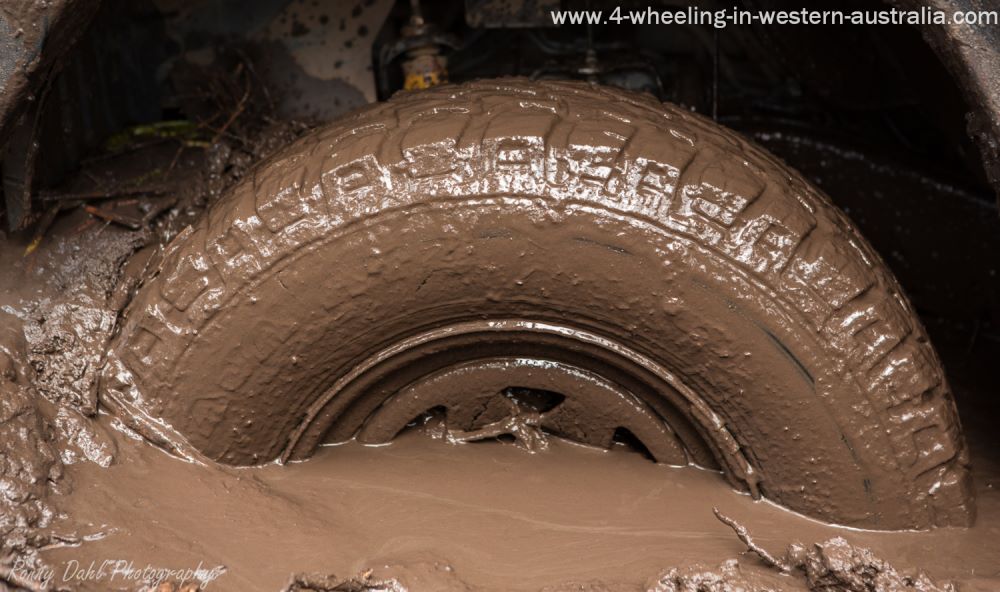
A deeper mud hole or rut is not always the worst option as the base can be harder than the shallow option, this is because the deeper mud hole has been used more than the shallow one, however this is not always the case.
Another interesting thing I have experienced with muddy ruts/crossings is going around can get you stuck in mud more than the rut itself, this is because the mud crossing/rut is harder or more compacted by previous off roaders and around the crossing/ruts themselves is very soft and sloppy due to all the water being forced out each time another vehicle comes past and the top layer of clay/soil is always softer than dug out crossings and ruts.
This is not always the case so it pays to check it on foot first, as going around a deep mud hole can be dangerous as its soft and slippery, sliding in the mud hole or deep rut sideways could tip the 4WD into it, or the mud hole could be far too deep and soft and going around is the better option.
Every mud hole is different and the same mud hole you crossed last week may well have changed during that short time and get you stuck in mud.
Stuck in mud, how to get out:
Getting out with just the power of the vehicle:
Depending on the situation generally try 1st or 2nd gear low give it some right foot and with the wheels spinning turn left and right, left and right with the steering wheel to get the front wheels to search for traction.
Turn the wheels left, right, left, and right until you’re out.
Mud Tyres are key here but all terrain tyres do benefit from this tip as well.
Even if the 4x4 starts getting traction keep turn the wheels left, right, left,
and right until you’re out. Anytime you feel momentum is getting lost turning
the front wheels really helps.
If forwards is not working then try reverse.
Getting
out with help:
Winching, snatch strap and track building are the best options here.
The 4x4 Winch:
Winching being the most controlled but slow is best for situations where the vehicle stuck in mud is not urgently required to get out (in other words, the cab is not getting flooded with muddy water).
Where there is mud there are trees about 50% of the time, however in swampy areas trees are usually too small or weak to act as an anchor point. In this case get a vehicle to be the anchor point if no one else has a winch.
Depending on how stuck in mud the 4x4 is it may require a double line pull (for info on a double line pull see this link), some holes can have really strong suction to the point where pulling a 3 tonne 4WD will be more like 5t, especially when bogged to the axels.
Mud this thick will usually not force water into the cab and trying the use a shovel is back breaking work as the stickiness and suction of the mud is so strong. This mud is mostly found in clay pans and salt lakes so BEWARE when crossing one!
Remember that mud is always slippery and there is always a risk the recovery
vehicle could slide, to help prevent this from happening have another 4x4
attach itself to the rear of the recovery vehicle.
Also the vehicle stuck in mud can be bogged so much that the recovery vehicle will just pull itself towards the bogged 4x4, this makes no progress in the recovery and is why a third vehicle acting as an extra weight will go a long way to help.
An extension strap is handy for these situations and allows a good distance between all 4WDs involved.
The Snatch Strap:
Stuck in mud where the water level is above the door sills it’s time to hook the snatch strap up before water gets past the door seals.
Having a snatch strap attached before entering challenging mud holes and crossings is a smart idea; this keeps you, your mate or your partner from having to walk through waist high mud trying to find the recovery point. Instead having it already attached it’s just a matter of throwing the other end to the recovering vehicle.
When snatching out a vehicle stuck in mud it can be very hard to judge how much force is needed.
This is because no one is sure what lies underneath the water/mud; there could be logs, rocks, more ruts, tree roots or simply sticky mud.
There is no way to be 100% sure so taking it easy on the first few pulls is very wise.
Listen out for any unusual noises like metal against rock, snapping wood or anything unexpected.
(For snatching tips see this link)
Track building:
This requires no recovery tools and can be very effective, a few logs and rocks can make all the difference when placed in the right spot.
Track building.
Not only could it get the bogged 4x4 out, it can also assist winching and snatching by allowing the wheels to climb a steep rut or ledge gradually rather than suddenly.
If you find that logs and rocks just seem to disappear into the depths of the mud pit it may be time for some other recovery methods.
Recent Articles
-
Goodyear wrangler MTR
Jun 28, 24 10:27 PM
I have these on my defender 90 and my Dmax Ute. I get around 100,000 km out of them. I tried AT for one change and went back to the MTs. They are gol -
4x4 off road tracks 0 to 250 km from Perth
Nov 21, 23 07:40 PM
On this page we cover 4x4 off road tracks within a 250 km radius from Perth... -
4 Wheeling Around Jurien Bay.
Nov 21, 23 07:35 PM
Jurien Bay 4x4 tracks info and general information about the area...
- Home
- 4x4 Recovery
- Stuck in Mud
Leave Stuck In Mud And Go 4 Wheeling In Western Australia.
